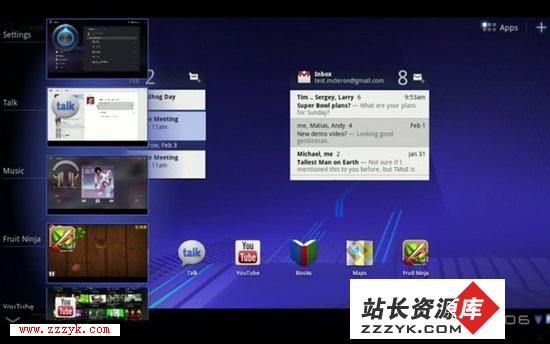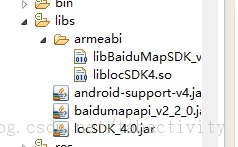Android应用开发学习之进度条
进度条ProgressBar是一个经常用到的组件,它的使用也很简单,只需要把进度条显示在前台,然后在后台启动一个线程,根据需要修改进度条的状态。我们来看一个例子,该程序运行效果如下图所示:
该程序主布局文件main.xml内容如下:
<?xml version="1.0" encoding="utf-8"?>
<LinearLayout xmlns:android="http://schemas.android.com/apk/res/android"
android:orientation="vertical"
android:layout_width="fill_parent"
android:layout_height="fill_parent"
>
<ProgressBar
android:id="@+id/progressBar1"
android:layout_width="wrap_content"
android:layout_height="wrap_content"/>
<ProgressBar
android:id="@+id/progressBar2"
android:layout_width="wrap_content"
android:layout_height="wrap_content"
style="?android:attr/progressBarStyleLarge"/>
<ProgressBar
android:id="@+id/progressBar3"
android:layout_width="wrap_content"
android:layout_height="wrap_content"
style="?android:attr/progressBarStyleSmall"/>
<ProgressBar
android:id="@+id/progressBar4"
android:layout_width="match_parent"
android:layout_height="wrap_content"
style="?android:attr/progressBarStyleHorizontal"
android:max="100"
android:progress="0"
android:secondaryProgress="70"/>
<ProgressBar
android:id="@+id/progressBar5"
style="@android:style/Widget.ProgressBar.Large"
android:layout_width="match_parent"
android:layout_height="wrap_content"/>
<ProgressBar
android:id="@+id/progressBar6"
style="@android:style/Widget.ProgressBar.Small"
android:layout_width="match_parent"
android:layout_height="wrap_content"/>
<ProgressBar
android:id="@+id/progressBar7"
android:max="100"
android:progress="0"
android:secondaryProgress="70"
style="@android:style/Widget.ProgressBar.Horizontal"
android:layout_width="match_parent"
android:layout_height="wrap_content"/>
</LinearLayout>
主Activity文件内容如下:
package com.liuhaoyu;
import android.app.Activity;
import android.os.Bundle;
import android.os.Handler;
import android.os.Message;
import android.view.View;
import android.widget.ProgressBar;
import android.widget.Toast;
public class MainActivity extends Activity {
private ProgressBar pb1, pb2, pb3, pb4, pb5, pb6, pb7;
private Handler PbHandler;
private int progress = 0;
/** Called when the activity is first created. */
@Override
public void onCreate(Bundle savedInstanceState) {
super.onCreate(savedInstanceState);
setContentView(R.layout.main);
pb1 = (ProgressBar)findViewById(R.id.progressBar1);
pb2 = (ProgressBar)findViewById(R.id.progressBar2);
pb3 = (ProgressBar)findViewById(R.id.progressBar3);
pb4 = (ProgressBar)findViewById(R.id.progressBar4);
pb5 = (ProgressBar)findViewById(R.id.progressBar5);
pb6 = (ProgressBar)findViewById(R.id.progressBar6);
pb7 = (ProgressBar)findViewById(R.id.progressBar7);
PbHandler = new Handler(){
public void handleMessage(Message msg){
if(msg.what == 0x0){
pb4.setProgress(progress);
pb7.setProgress(progress);
}
else
{
Toast.makeText(MainActivity.this, "任务执行成功!", Toast.LENGTH_SHORT).show();
pb1.setVisibility(View.GONE);
pb2.setVisibility(View.GONE);
pb3.setVisibility(View.GONE);
pb4.setVisibility(View.GONE);
pb5.setVisibility(View.GONE);
pb6.setVisibility(View.GONE);
pb7.setVisibility(View.GONE);
}
}
};
new Thread(new Runnable() {
public void run() {
while (true) {
progress += Math.random()*10;
try{
Thread.sleep(200);
}
catch(InterruptedException e){
e.printStackTrace();
}
Message m = new Message();
if(progress < 100){
m.what = 0x0;
PbHandler.sendMessage(m);
}else{
m.what=0x1;
PbHandler.sendMessage(m);
break;
}
}
}
}).start();
}
}
补充:移动开发 , Android ,





